Submitted by dradmin on Mon, 02/02/2015 - 22:27
The stonework and facade of this Victorian town house in Archway has been previously restored several years ago, but unfortunately a few fundamental mistakes during this repair lead to quick aging of the stone cornice. The mortar mix used to rebuild the stonework was heavily cementitious and applied in very thick layers (80-100mm in some areas). In addition to the thick and heavy cement mortar, the stone repairs were done with very little reinforcement – only screws and a little bit of 1mm wire. Thick layers of cement mortar with inadequate reinforcement caused cracks to appear quickly and in some areas the stone repairs had just came off.
 |
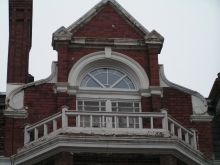 |
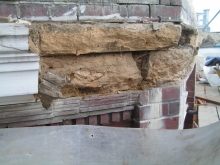 |
|
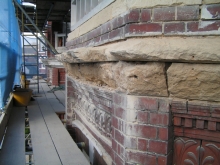
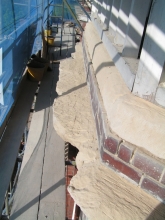
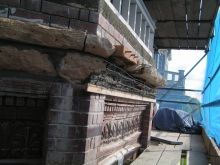
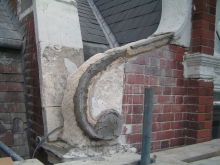
|
First stage of the project was to remove all old repairs and loose stone down to a solid base. In order to ensure all damaged areas are chiselled off without harming any good and undamaged stone, we have started from the centre of the damaged area of the balcony cornice by vertically cutting smaller sections. The condition of each cut section was checked for cracks or movements and if found problematic, it was chiselled off. This process was repeated until we reached a good solid stone cornice.
Second and very important stage was to install steel reinforcement for the new repairs to the balcony cornice. Steel reinforcement gives much stronger bonding with the existing stone, and also gives strength to the entire cornice structure preventing it from cracking due to weather temperature changes and its own weight. The cement mortar has very high compressive strength, however any tension would cause it to easily crack - properly designed steel reinforcement would ensure long life of the stone repair. In addition to the steel reinforcement, we had to install bricks between some of the stones to avoid multi-layering with mortar.
Third and longest stage was to apply layer after layer of cement mortar, building up slowly to the desired shape of the balcony cornice. The mortar mix which we have used was sand, cement and hydrated lime in volume ratio 6:1:1 – this is the recommended ratio for mortar surfaces later to be painted. Adding hydrated lime to the mortar gives flexibility, breathability and also reduces the weight of the repairs. The backing has been built layer by layer to around 10-15 mm from the finished surface and we have used sharp sand to give better strength to the balcony cornice. For the final layer we have used plastering sand and fine stone dust in the mortar mix for smoother finish.
Final sage was painting with masonry paint, which took place after a week or so of complete drying to prevent peeling off in the future.
|
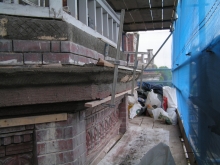 |
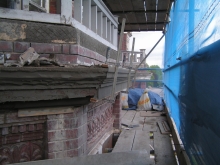 |
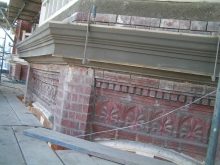 |











Add new comment